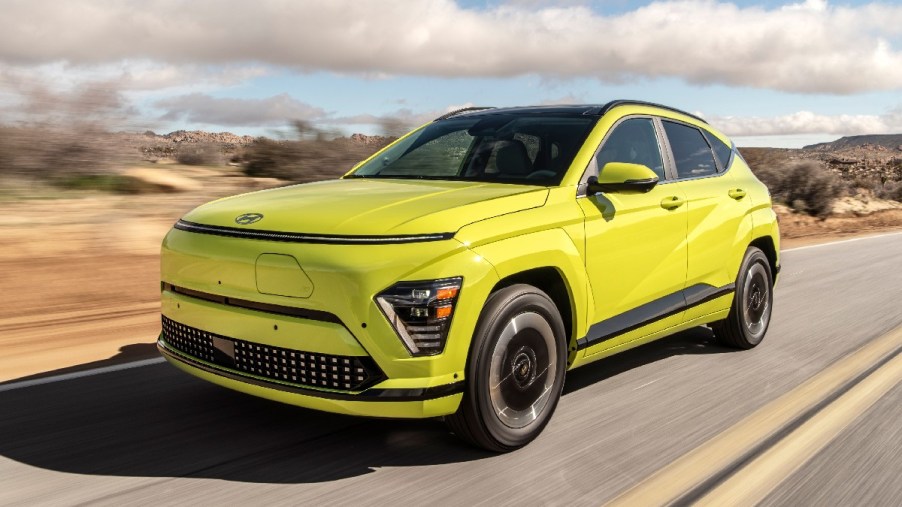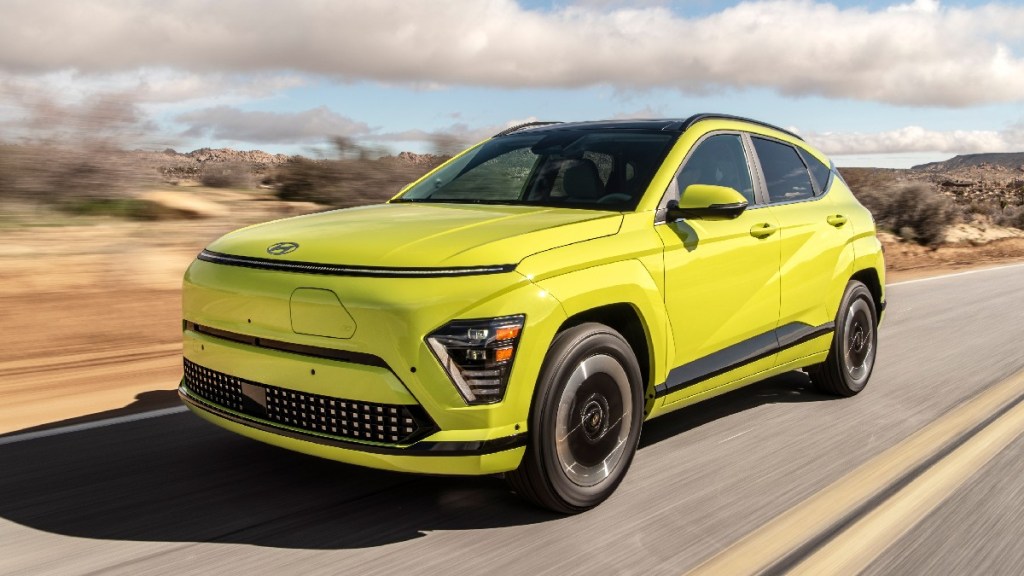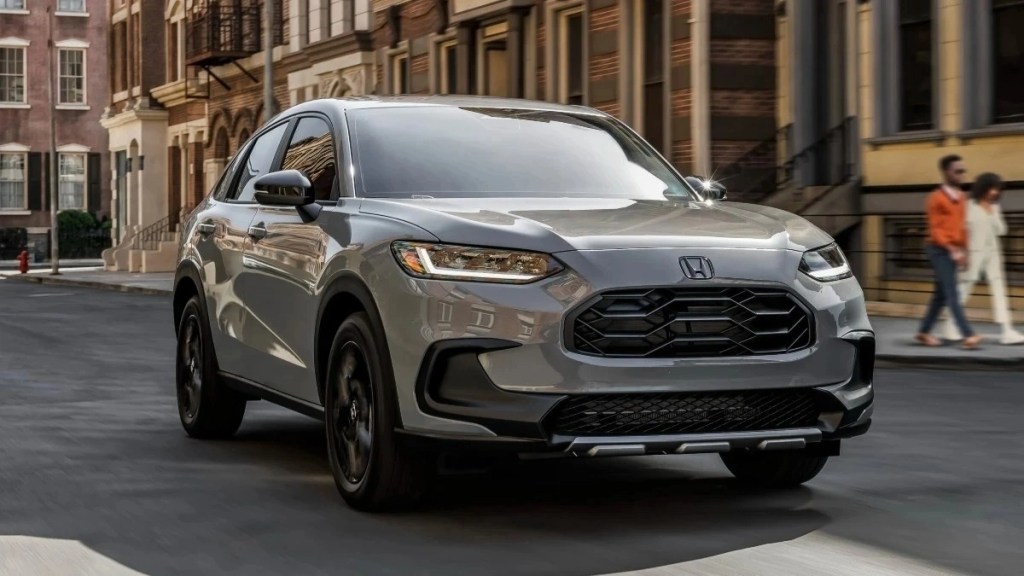
2024 Hyundai Kona Has 1 Big Item Honda HR-V Doesn’t Offer
The Hyundai Kona and the Honda HR-V are close subcompact crossover SUV competitors — and both models have much to offer. However, the 2024 Hyundai Kona has one big item that the 2023 Honda HR-V doesn’t offer: an EV model with the Kona Electric.
Unlike the 2023 Honda HR-V, the 2024 Hyundai Kona has an EV model: Kona Electric

Hyundai has surprisingly been a big player in the electric vehicle segment. While Tesla still sells the most EVs, Hyundai has achieved success with its electric car lineup, which includes the Kona Electric, IONIQ 5, and IONIQ 6 — with more on the way.
And while the EV version of the subcompact crossover SUV has been around for five years, the 2024 Hyundai Kona Electric is greatly improved with a new design, a new platform, new features, and greater capabilities.
Conversely, the 2023 Honda HR-V doesn’t offer an EV model. It also received a redesign, but it still only comes with a gas-powered engine in the United States. Additionally, there’s a hybrid version of the HR-V in international markets, but the only option in America is an internal combustion engine.
Honda has been slow to go all-electric, much like other Japanese automakers, including Toyota, Mazda, Nissan, and Subaru. While there’s the upcoming Honda Prologue electric midsize SUV, currently, the only Hodel models in the United States are fully gas-powered models and hybrids.
EV powertrain in the 2024 Kona Electric provides advantages over the 2023 HR-V

The EV powertrain in the 2024 Hyundai Kona Electric gives the subcompact SUV advantages over the 2023 Honda HR-V. This includes performance. The electric motor in the Kona Electric generates an output of up to 201 horsepower and 188 lb-ft of torque with the larger battery pack. In comparison, the 2.0-liter four-cylinder engine in all U.S.-spec HR-V models produces 158 horsepower and 138 lb-ft of torque.
Also, while the acceleration time is not yet available for the 2024 Kona, it’s expected to be quicker than the outgoing model, which can go from 0-60 mph in 6.4 seconds. Conversely, the HR-V completes the sprint in 9.8 seconds.
Additionally, the Kona Electric provides a quieter ride than the HR-V. Its electric powertrain makes minimal noise, while the internal combustion engine in the HR-V is noisy. Plus, with fewer moving parts, the Kona Electric is easier to maintain compared to the HR-V. This translates to lower repair costs.
Furthermore, with its zero carbon emissions, the Kona Electric is less harmful to the environment than the HR-V. Also, while the estimated efficiency rating of the 2024 Kona Electric hasn’t yet been revealed, it will likely be similar to the outgoing model (up to 132 city/108 highway MPGe). In comparison, the 2023 HR-V gets up to 26 city/32 highway mpg.
Kona Electric has more advanced technologies than the Honda HR-V
In addition to the EV powertrain elements, the 2023 Kona Electric has more advanced technologies than the 2023 HR-V. This includes a more capable infotainment system. Also, the Kona Electric has dual 12.3-inch panoramic display screens, while the largest screen that the HR-V offers is 9.0 inches.
There’s also the i-PEDAL feature, which provides one-pedal driving. If the driver chooses, accelerating, decelerating, and stopping can all be done with the accelerator pedal. Plus, the Hyundai subcompact SUV has a Vehicle-to-Load feature, which can charge electrical equipment and power devices.
With its EV powertrain, the 2024 Hyundai Kona Electric subcompact crossover SUV has a big item that the 2023 Honda HR-V doesn’t offer. As Honda is slow to produce electric cars, Hyundai is going all in with EVs.


